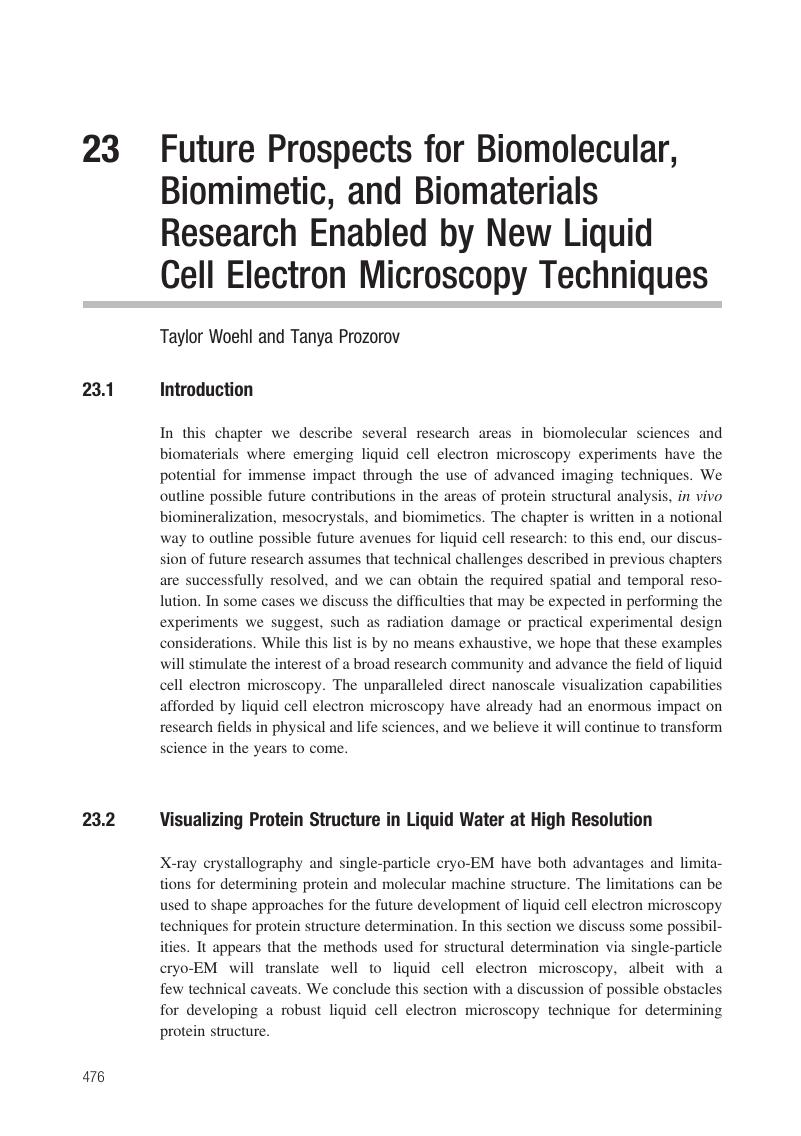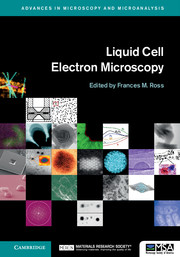Book contents
- Liquid Cell Electron Microscopy
- Advances in Microscopy and Microanalysis
- Liquid Cell Electron Microscopy
- Copyright page
- Contents
- Contributors
- Preface and Acknowledgements
- Part I Technique
- Part II Applications
- Part III Prospects
- 19 High Resolution Imaging in the Graphene Liquid Cell
- 20 Analytical Electron Microscopy during In Situ Liquid Cell Studies
- 21 Spherical and Chromatic Aberration Correction for Atomic-Resolution Liquid Cell Electron Microscopy
- 22 The Potential for Imaging Dynamic Processes in Liquids with High Temporal Resolution
- 23 Future Prospects for Biomolecular, Biomimetic, and Biomaterials Research Enabled by New Liquid Cell Electron Microscopy Techniques
- Index
- References
23 - Future Prospects for Biomolecular, Biomimetic, and Biomaterials Research Enabled by New Liquid Cell Electron Microscopy Techniques
from Part III - Prospects
Published online by Cambridge University Press: 22 December 2016
- Liquid Cell Electron Microscopy
- Advances in Microscopy and Microanalysis
- Liquid Cell Electron Microscopy
- Copyright page
- Contents
- Contributors
- Preface and Acknowledgements
- Part I Technique
- Part II Applications
- Part III Prospects
- 19 High Resolution Imaging in the Graphene Liquid Cell
- 20 Analytical Electron Microscopy during In Situ Liquid Cell Studies
- 21 Spherical and Chromatic Aberration Correction for Atomic-Resolution Liquid Cell Electron Microscopy
- 22 The Potential for Imaging Dynamic Processes in Liquids with High Temporal Resolution
- 23 Future Prospects for Biomolecular, Biomimetic, and Biomaterials Research Enabled by New Liquid Cell Electron Microscopy Techniques
- Index
- References
Summary

- Type
- Chapter
- Information
- Liquid Cell Electron Microscopy , pp. 476 - 500Publisher: Cambridge University PressPrint publication year: 2016



